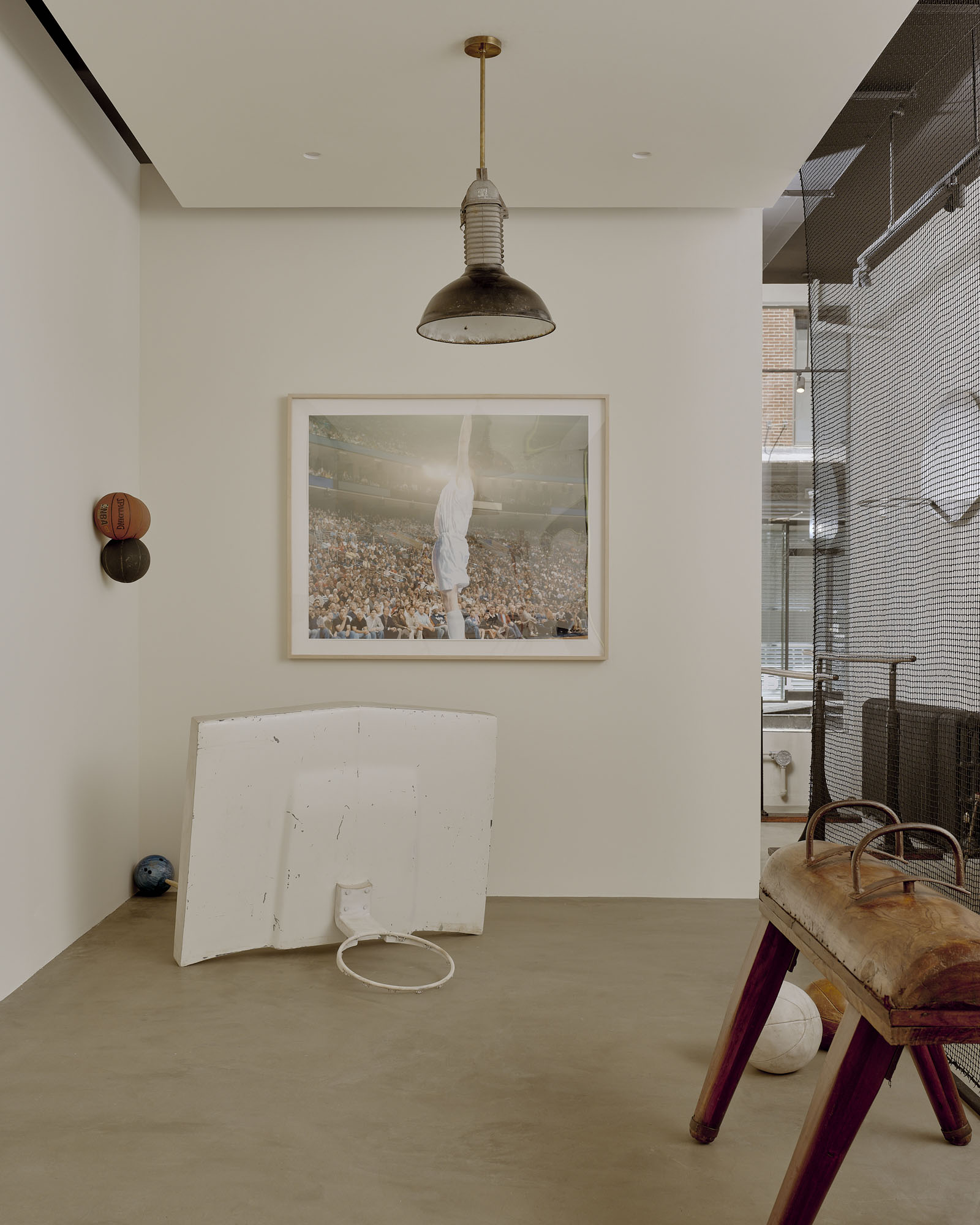
“Weekend Tournament”
Raisonné | 16 Crosby St
Through July 31
Years ago, I argued to a friend that human beings are so geared towards play that if I took 10 people and put them together in an open field, without even a ball, they would invent a game to play together, with its own rules, logic, and tensions, by the time I returned a few hours later.
Much of my life has centered around play. I played soccer from the time that I could walk, and made it to the professional levels before quitting to become a writer. During the tour for my first book, The Minotaur at Calle Lanza—a work of literary nonfiction that plays with genre by incorporating speculative elements—I was often asked how I made that transition, since many people apparently tend to think of sports and literature as opposites.
My answer to that question is that, while the approach is different, the foundation feels the same. I am still at play. I am still using my mind, body, and experience to express myself within the borders of the field and with recognition of my own strengths and limitations, physically and technically. In soccer, the problem was how to beat the opposing defender and team. In writing, it was arranging words and paragraphs to create something thoughtful and entertaining. I used to copy books and stories of my favorite writers by hand, and classified it as practice, the same way I would imitate moves from my favorite players in the backyard when I was young, as a way of developing my own style. With literature, I’m still attempting to do what I dreamed of as a young kid, riding in a van with my teammates to a far-off soccer tournament—to fully realize and express myself through an art. Adding surrealist elements to a nonfiction book was for me no different than chipping a goalkeeper when a simple finish would have been expected.
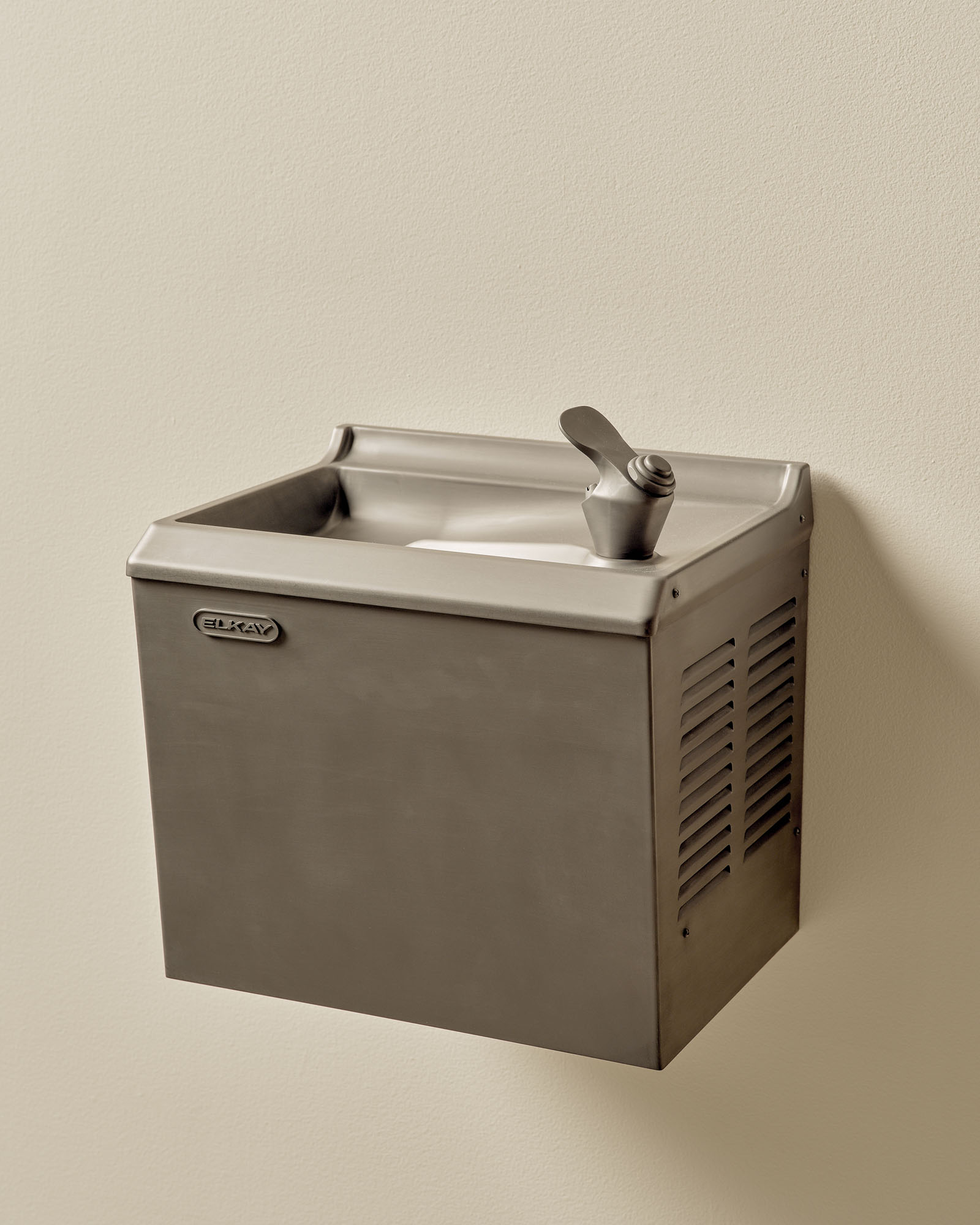
I began thinking about these questions of sport, art, and literature again when I went to see “Weekend Tournament,” a packed exhibition at Raisonné Gallery, organized by Raquel Cayre and Ariel Ashe, that wrangles with the connection between sport, art, and design.
Adam McEwen’s Fountain, 2009, perfectly replicates the kind of water fountain that I imagine so many of us had growing up in school. It transported me back to the experience of drinking cold water as a kid after gym class. The feeling was so strong that I wanted to try the fountain, or at least see if it worked. But it isn’t operable; it is made out of graphite.
I had this compulsion throughout the exhibition—the desire to touch the art, from the vintage parallel bars to the tennis rackets behind glass in the Pro Shop NYC by Vicente Muñoz space. I wanted to pick them up, feel the weight of a racket in my hand, and give it a swing. The active ping pong game underway, on a table by Sam Stewart, and the mini-golf course of Will Gisel’s Bellwether, 2025, indicated that at least some of the works are interactive. The collected objects in the gallery are all ultimately a call to play.
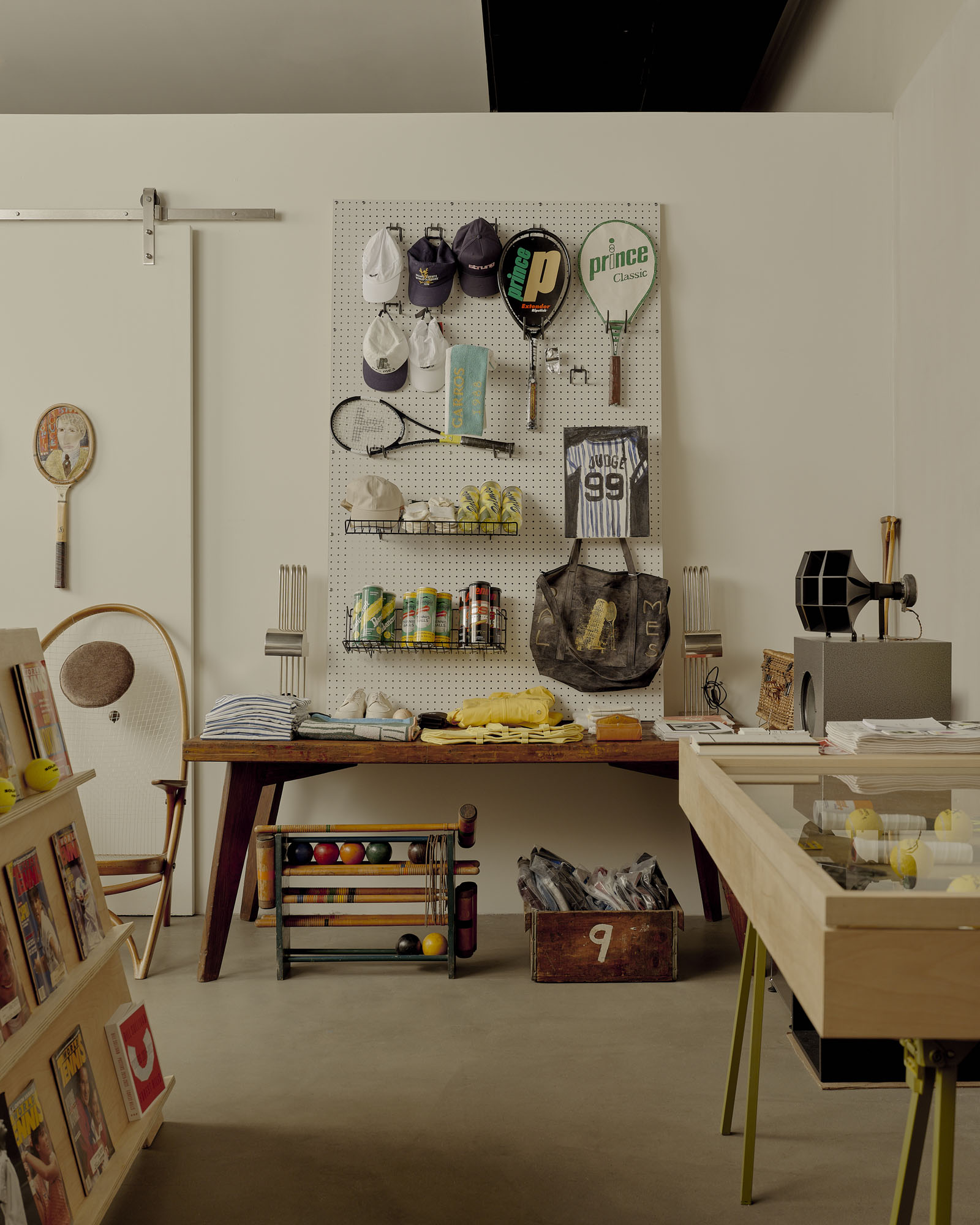
There are 63 pieces of art in the exhibition, made by an eclectic gathering of 27 artists, including Le Corbusier, Paul Pfeiffer, Cory Arcangel, Al Freeman, Rachel Harrison, Richard Prince, and René Herbst, whose 1935 collaboration The Young Man’s Home—a model apartment that included a gym—serves as one of the inspirations for the show. To navigate the exhibition, you’ll want to pick up the map-slash-checklist that numbers the pieces, starting with John Roman Brown’s oil painting Ten Feet, 2025, which depicts a player donning a number 33 jersey making a layup against opponents in red. (Brown has the most pieces, 16, on view here.)
As I walked around, and while watching the tennis match projected in Pro Shop NYC by Vicente Muñoz, I realized that what felt strange was that everything smelled so nice and clean. There were all these works of art that suggested sport and visually triggered memories and emotions of the physical activity of sport, but what was missing was the smell, the residue, of human beings. Anyone who has ever been to a gym, a basketball or tennis court, a soccer field, a gymnastics facility, anyone who has ever ridden in a bus or van with their teammates after a weekend tournament, knows that one of the most distinctive elements of those spaces is the smell of sweat and skin—of human use, the consequence of people at play, which is at the heart of sport.
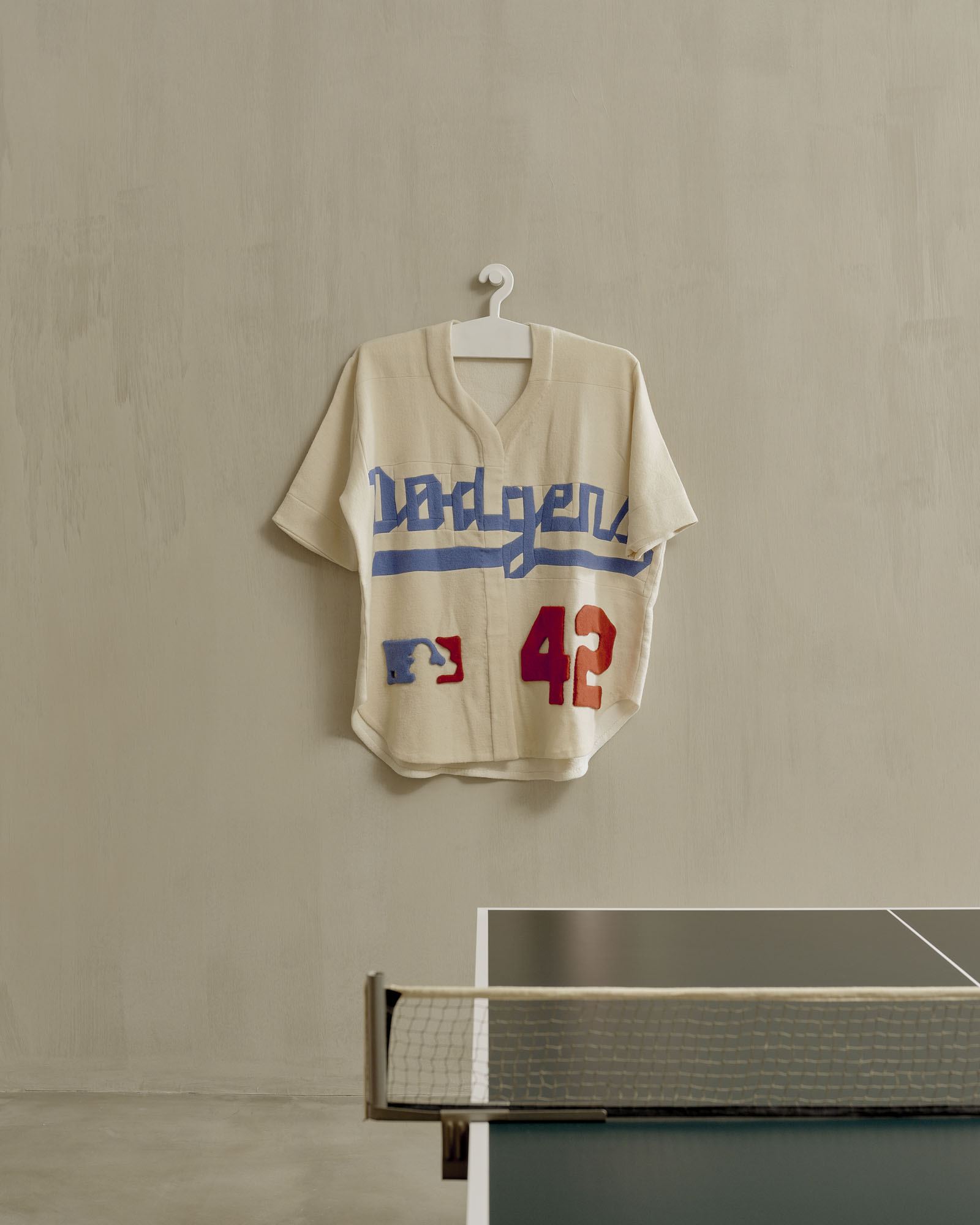
When I decided to move to New York City some years ago, I had a couple of demands about where I was to live. The criteria was that the apartment must be in a quiet area, and it had to be near a park. I wanted to be able to leave my front door at any moment and see people engaging in a variety of games. I am lucky enough to be close to Prospect Park and even luckier to be close next to the Parade Grounds and the Prospect Park Tennis Center. Almost every day, I walk or run around the park, and see people of all ages playing tennis, chess, ping pong, soccer, American football, baseball, frisbee, skating, or working out in the open air gym, while kids run around, inventing their own games at the playground. These sights are as satisfying to me as watching Bach perform at Carnegie Hall, They are scenes of human beings expressing and learning about themselves.
In his Paris Review “The Art of Fiction” interview, Julio Cortázar made this connection between literature and sport when he defined both as serious and profound forms of play. Art, like literature for Cortázar, is a game “one can put one’s life into.” Just as sport, like art, is a platform for human expression. When I am faced off against an opponent with a ball between us, I am creating and learning about myself through contact and friction with the other athlete. Through a recognition of the tools at my disposal—my body, its capabilities, its strengths, its weaknesses, and the same with my mind—I create a style in relation to the demands and rules of the sport.
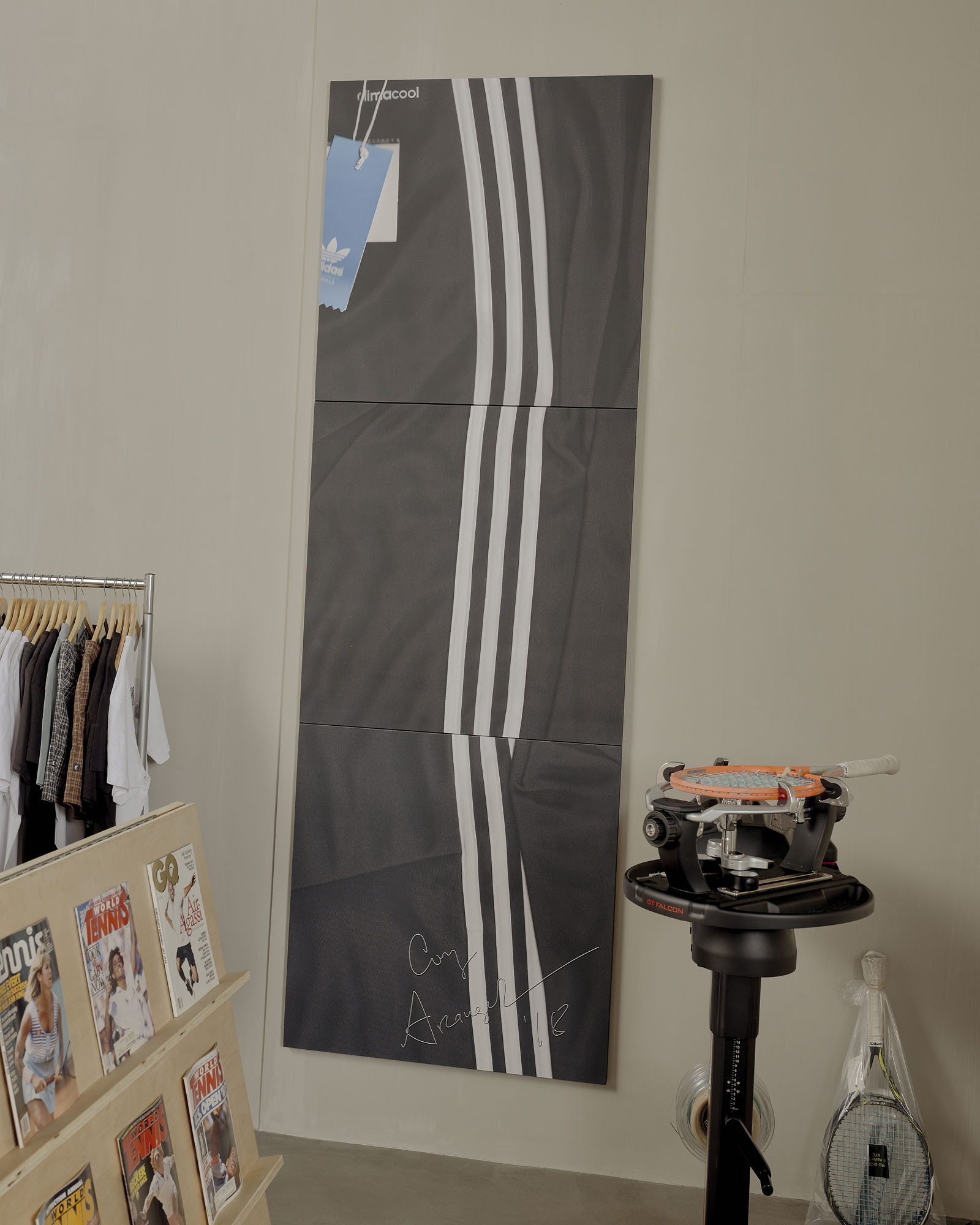
When facing my opponent, I try to attack their weaknesses with my strengths while hiding my own weaknesses. Throughout the time that we’re engaged against each other, I am constantly solving—or trying to solve—the problems they pose. And through this repetitive process of competition, practice, and reflection, I learn what my body and mind can do.
As I was moving to the exit of the gallery, I saw that one of the other visitors had stepped onto the mini golf course of Gisel’s Bellwether. He grabbed a golf club and three of the balls, and readied himself to make the shot. I stood back. The first one he missed slightly to his left. Then, taking his time to correct himself, he hit the second one perfectly to the steel pole that stuck out of the hole. The few of us watching couldn’t help but laugh and clap for him. It felt like he understood how to best experience “Weekend Tournament.”
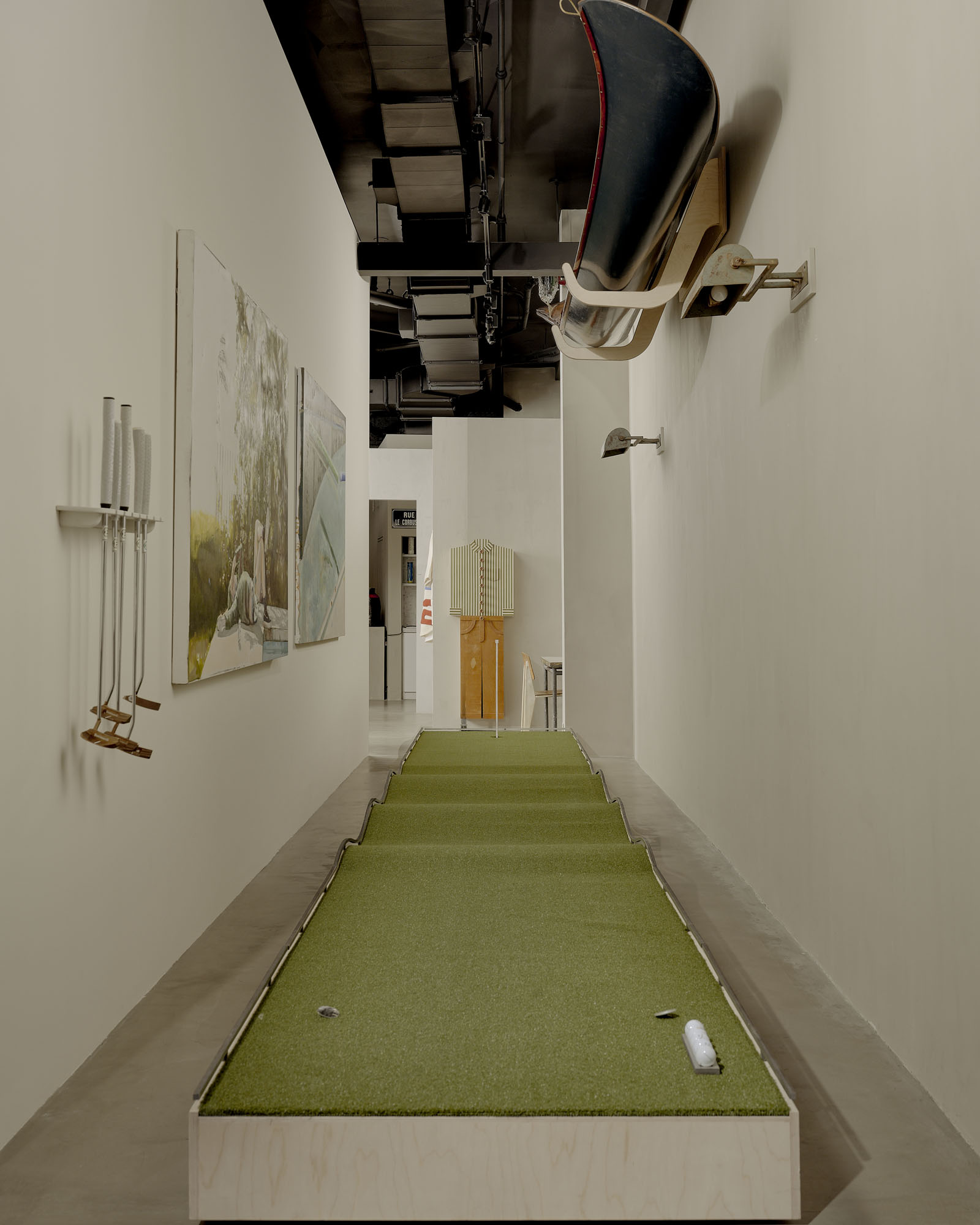
This effort at self-knowledge and self-mastery through physical and mental improvement, alongside a mastery of technique and tactics, is the same thing an artist is after. The possibility of a masterpiece, the chance to create a work, a gesture, a performance, that has one’s whole life in it. Whether this attempt at a masterpiece is ever realized or not, the effort towards it is exhilarating and fulfilling on its own. It grants one a purpose, whether that’s for a career or for a few minutes at the park with friends.
When I began writing, I knew that mastery of an art comes at a price—and that price is your whole self. It takes effort and sweat. This effort can be evidenced in sport through broken rackets and ripped cleats. In art, it can look like canvas after canvas of failed paintings, and, in writing, it can look like a graveyard of ideas that may never be used. Not all effort or ideas need to lead to a final product for the world to see but each attempt serves as a step in the journey towards refinement. It can shift from sport to literature, from painting to sculpture, but it is essentially a lifelong attempt at fully expressing a self that is always transforming.
And it is still fundamentally play. It can be and is oftentimes difficult, but you attempt it because the potential joy of that gesture toward a masterpiece is greater than the difficulties of getting there. Anyone who has ever made something that feels like it reflects them, or who has performed on a field, a court, or even a ping pong table, anywhere that it felt like their body and mind were working together perfectly, knows that what they experience—beyond relief and happiness for reaching a deadline, finishing a piece, or winning a game—is a feeling of joy and a sense, a glimpse, of being truly free. For however long that feeling lasts, the pain of getting there is worth it. Then you try to do it again.










 in your life?
in your life?